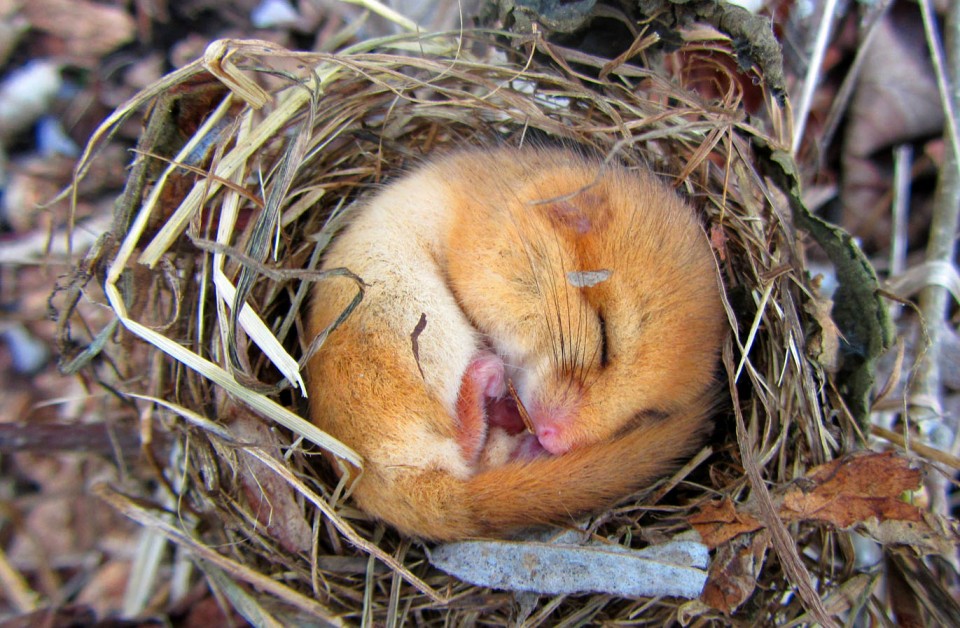Summary
Hibernation is often thought of as "sleeping away the winter", but the truth is much more complicated than this. Sleep is a physiological necessity - we need this "downtime" to repair our cells, replenish energy and sort out our memories. Hibernation is a complete physiological readjustment that includes significant reductions in heart rate, body temperature, immune function, and blood circulation; it also results in chemical changes to the body. It occurs largely in response to prolonged periods of severe weather conditions (typically cold), during which food many be unavailable or the costs of maintaining body temperature are too high, and is an inherently dangerous undertaking.
The details
The term “hibernation” probably stems from the Latin hibernare, meaning to “spend the winter”. Contrary to popular misconception, hibernation is more than just sleeping the winter away and while sleep appears to be a physiological necessity, hibernation is an adaptation to climatic conditions – it’s by no means essential and is actually an inherently dangerous undertaking. Scientists still disagree about precisely what hibernation entails, but ‘true hibernators’ are generally characterized by undergoing a substantial drop in their body temperature, in some cases close to freezing. The hedgehog, for example, drops its body temperature to around 10C (50F), while some species of bat have been documented with body temperatures as low as 2C (37F) during hibernation and dormice drop theirs to about 4C (39F).

When an animal settles down into hibernation its heart rate also drops significantly and this, along with the decline in body temperature, appears to be controlled by an area of the brain called the hypothalamus. The instigation of hibernation seems to be controlled by a blood-borne substance (Hibernation Inducement Trigger – HIT) that kicks in with declining day length and temperatures.
During hibernation, an animal relies on its reserve of white adipose tissue (normal fatty tissue) for energy. When a hibernating organism needs to "wake up" it needs to generate a substantial amount of heat, to raise its body temperature back to normal. This heat is obtained from a type of fatty tissue found around the heart, back, shoulders and liver of hibernating animals and human babies, called brown adipose tissue (BAT).
BAT was first described from marmosets, a type of fruit-eating monkey from South America, by Konrad Gessner in 1551, although its true function was unknown until much more recently. The precise mechanisms by which BAT operates are rather complicated, and I will bring it down to its most basic level here. Under normal metabolic conditions, sugars such as glucose are broken down and converted to a compound called adenosine triphosphate (ATP), which is the energy currency of the body's cells. This process occurs in little organelles called mitochondria, which can be thought of as the “power houses” of a cell.
BAT contains a special protein that uncouples the proton pump that normally forms part of the ATP-making process, allowing the energy to be dissipated as heat, rather than going on to make ATP. (For the biologists amongst you, the proteins allow mitochondria to uncouple oxidative phosphorylation, part of the ATP creation process involving an electron transport chain, and utilize substrates to produce heat rather than ATP.) In essence, BAT is 'burnt' to produce heat that helps bring the body temperature back up, rather than generating energy (ATP) that the body would use for growth. Protein uncoupling has recently been found in tissues other than BAT, suggesting that BAT may not be the only tissue that can produce heat in this way.

An intriguing five year study by a team at the North Carolina State University identified two genes that seem to control hibernation in mammals. One gene stops carbohydrate metabolism, so glucose is preserved for use by the brain and nervous system, and the other controls the production of an enzyme that breaks up stored fatty acids and converts them into a useable fuel source.
Many creatures reduce their activity during the winter months; often sleeping for prolonged periods. There are, however, none of the physiological changes (e.g. considerable drop in body temperature, changes to heart rate, apnoea, changes to metabolic rate etc.) associated with hibernation – this is known as dormancy. In Britain, the only mammal species that truly hibernate are hedgehogs (Erinaceus europaeus), dormice (Gliridae) and bats (Chiroptera). Several others, including badgers (Meles meles) and squirrels (Sciurus vulgaris and Sciurus carolinensis), may go into a state of winter dormancy over parts of their range. Both dormancy and hibernation are usually triggered by decreasing light levels, lowering temperature and an absence of food.